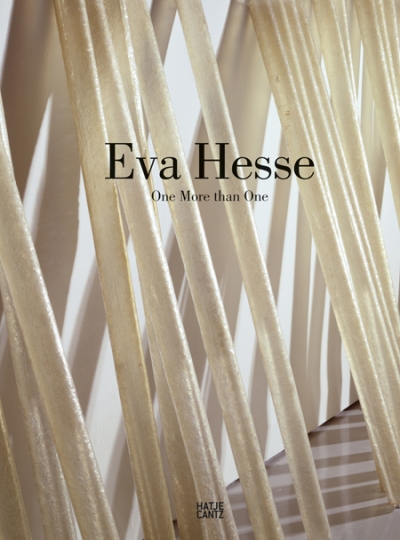
Eva Hesse. One More Than One
Eva Hesses Spätwerk fasziniert nicht zuletzt durch ungewöhnliche Materialien. Eva Hesse (1936 1970) ist eine der herausragenden Künstlerinnen des 20. Jahrhunderts. In Hamburg geboren, emigrierte sie 1938 über Holland nach New York. Als Eva Hesse im Alter von nur 34 Jahren an einem Gehirntumor verstarb, hinterließ sie ein faszinierendes und höchst eigenständiges Werk. In der zweiten Hälfte der 1960er-Jahre experimentierte sie mit neuen Materialien, die in der Objektkunst bis dahin noch keine Verwendung gefunden hatten, wie Polyester, Glasfaser und Latex. Hesses Skulpturen, die sich heute in den großen Museen der Welt befinden, verbinden auf einzigartige Weise komplexe und zum Teil konträre Aspekte: hart und weich, fragil und präsent, abstrakt und assoziationsreich. Diese reich bebilderte Publikation konzentriert sich mit Skulpturen und Zeichnungen aus den Jahren von 1966 bis 1970 auf die späte Werkphase der amerikanischen Künstlerin. Ausstellung: Hamburger Kunsthalle 29.11.2013 2.3.2014
Eva Hesse (1936–1970) was one of the foremost women artists of the twentieth century. Her artistic practice combined the seriality and reduction of 1960s Minimalism with emotion, sensuousness and physicality, while the transparency and transience of her unconventional materials also contributed greatly to her unique position in the art world of her day. From November 2013 onward, the Hamburger Kunsthalle is presenting the first solo exhibition of Hesse’s work in her native city. Hesse emigrated with her family via the Netherlands and England to the United States in 1938. They settled in New York City, where she later studied painting at the Cooper Union School of Art from 1954 to 1957, and then continued her studies in the master class of Josef Albers at the Yale School of Art and Architecture from 1957 to 1959. At the invitation of Friedrich Arnhard Scheidt, a German industrialist and art collector, and his wife Isabel, Hesse and her husband Tom Doyle spent a year in Kettwig an der Ruhr during 1964–1965. This period is regarded as a turning point in Hesse’s artistic practice. Drawing inspiration from the materials she found in an abandoned textile factory in Kettwig, she made her first three-dimensional artworks, and when she returned to New York she devoted herself exclusively to sculpture, creating fragile works in unconventional materials such as polyester, fiberglass and latex. Hesse died of a brain tumor in 1970, aged just 34. The exhibition at the Hamburger Kunsthalle focuses on the latter part of the artist’s career, a highly productive period in which she created a substantial number of sculptures and drawings.
Edited by Hubertus Gassner, Brigitte Kölle, Petra Roettig. Text by Renate Petzinger, Tom Doyle, Doug Johns, Brigitte Kölle, Lucy Lippard, Robert Mangold, Sylvia Mangold, Cindy Nemser, Petra Roettig, Franz Erhard Walther.






















































